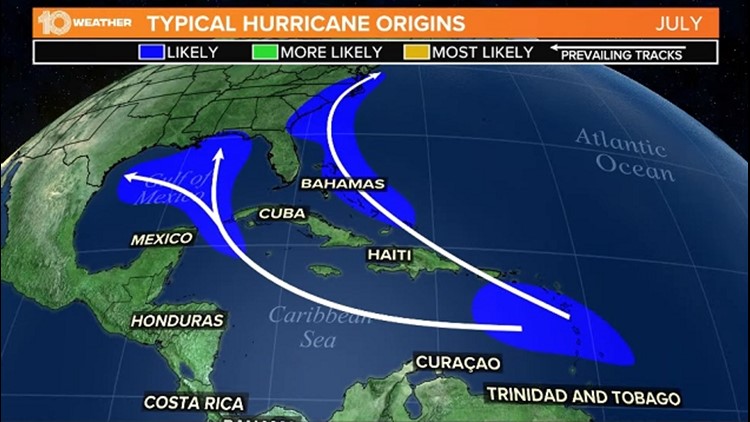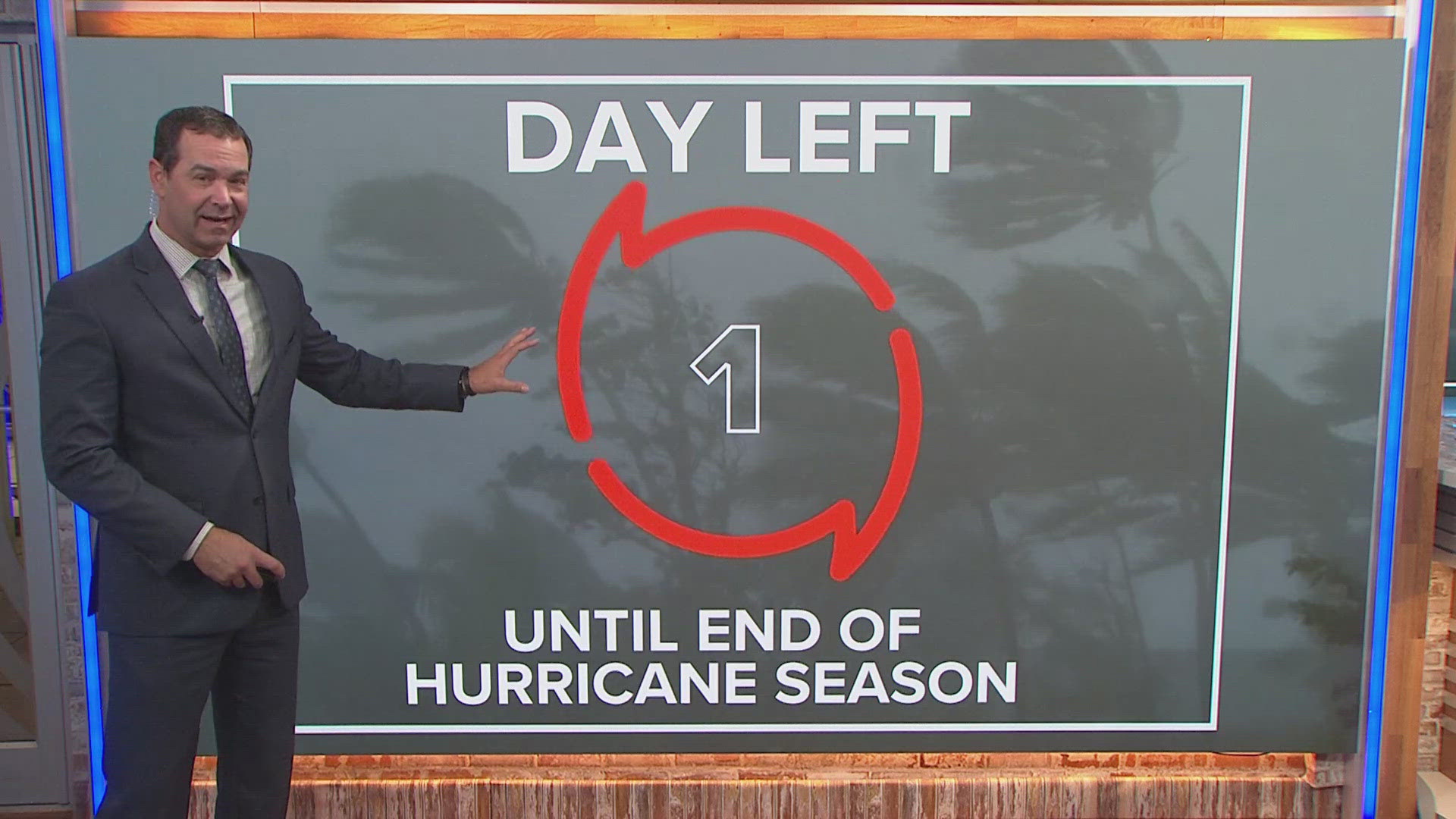TAMPA, Fla — Historically, July is a quiet time in the tropics. While there are no complaints for less activity in the Atlantic, we can't let our guard down during this time.
The National Hurricane Center is not monitoring any potential systems right now. In fact, they that no tropical cyclones are expected to develop during the next five days.
That is pretty typical this time of year. July has only produced 194 tropical storms and hurricanes since 1851-2020. While that may seem like a hefty amount, in the peak of the season, the month of September alone produced 1,048 named storms alone within that 169-year timespan.

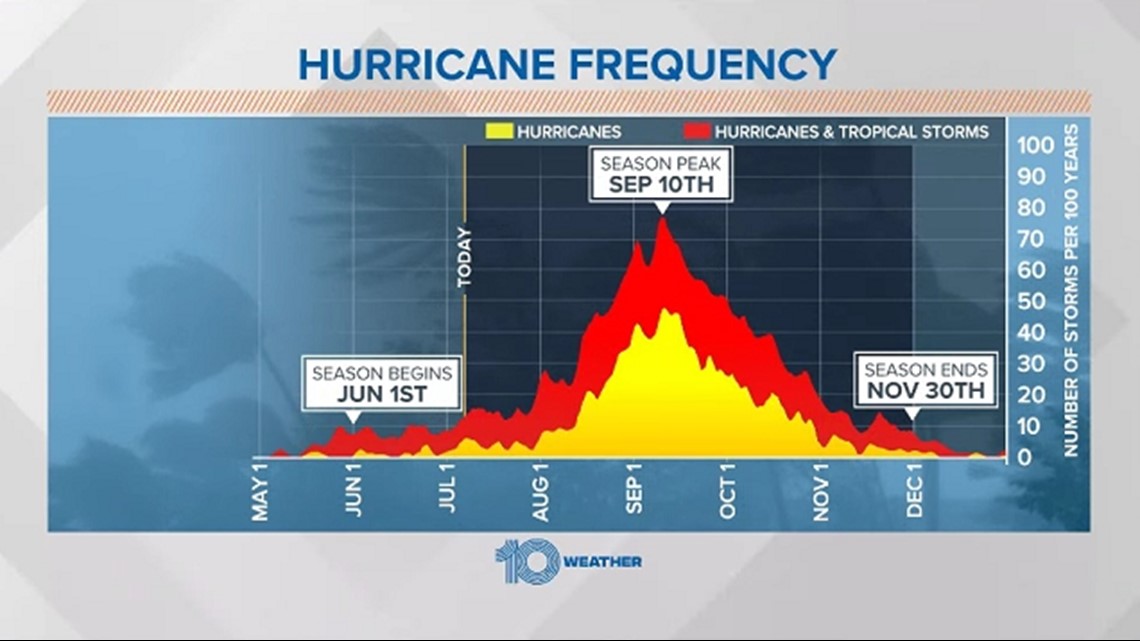
The main development region — virtually where all African waves originate in the central and eastern Atlantic — produces tropical waves that eventually develop into stronger storms, especially during peak season in August and September. In the early season months of July and July, tropical systems tend to develop closer to the Americas.
Also to note, it is still Saharan dust season in July. The Saharan Air Layer (SAL) is a mass of very dry, dusty air that forms over the Sahara Desert during the late spring and can last through early summer. Trade winds moving the dry dust east to west can help to keep sea surfaces slightly cooler and can also cap tropical development.

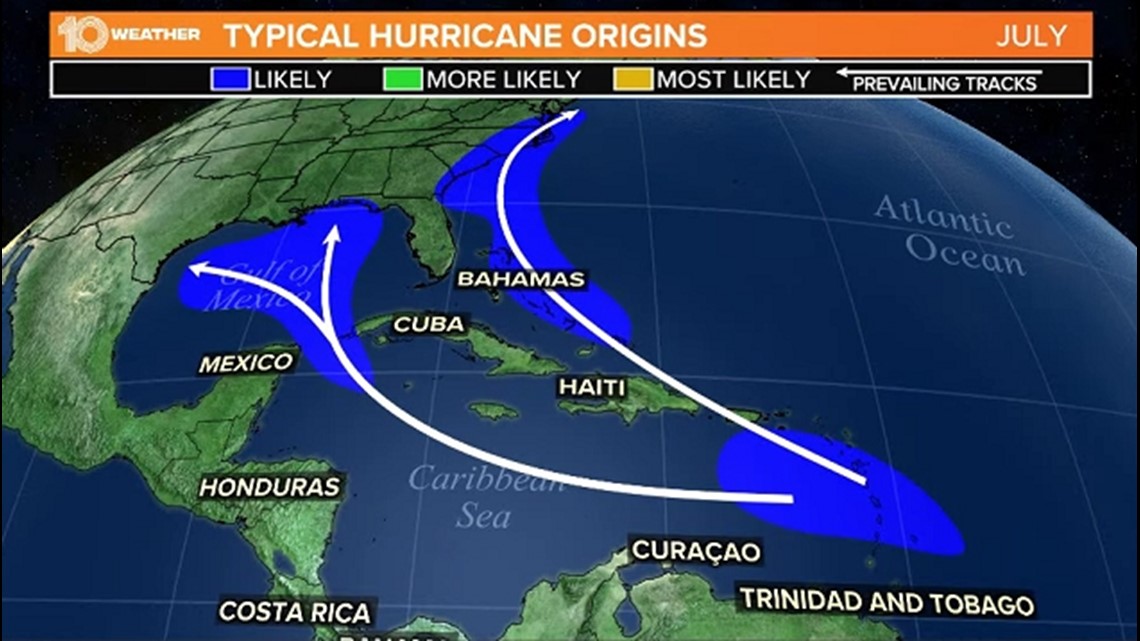
In July, forecasters start to look farther east in the Atlantic basin near the Lesser Antilles for tropical development. The bathwater Gulf of Mexico and warm Gulf Stream off of the Atlantic coast are also areas where storms originate during the month of July, and that's where we tend to see impacts closer to home.
For instance, last July, Hurricane Elsa, the earliest-forming fifth named storm on record in the Atlantic Ocean, was originally a tropical wave off of Africa before it formed into a depression east of the Windward Islands near Barbados. It then took a northwesterly track up the western coast of Florida as it briefly strengthened to a Category 1 hurricane.
Following the dissipation of Elsa, the rest of the month was quiet.

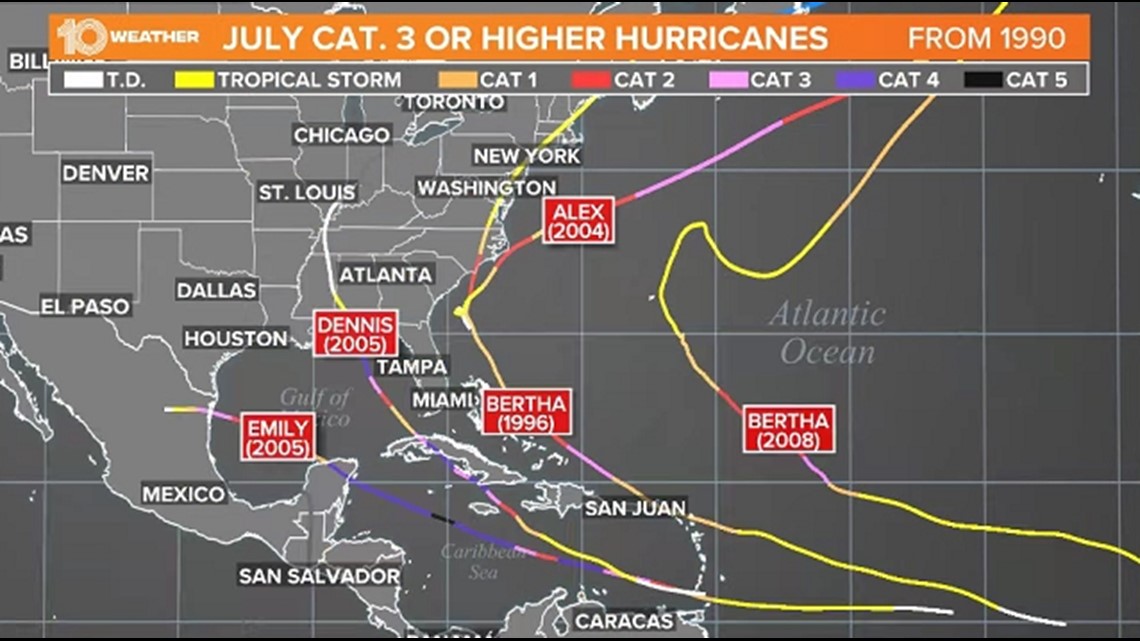
While numerous storms aren't likely during the month of July, major hurricanes being produced during this time are slim. Since 1990, July produced only five Category 3 or higher hurricanes, and Hurricane Dennis was the last July Category 4 to make landfall in the United States.
You can find the latest forecast, resources and a hurricane prep checklist here.

